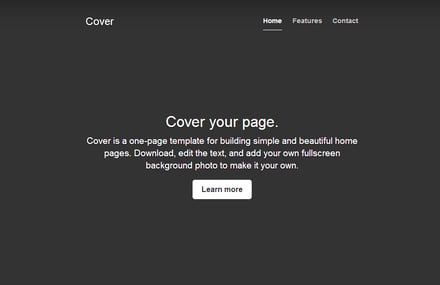Everyone's a Designer Thanks to Front-End Frameworks

Those just getting started in the world of digital design are faced with complex problems, which likely include limited resources (time or money) and some rather abstract technical and artistic concepts to address.
Fortunately, today, everyone can be on the path to virtual greatness thanks to the popularity and outright usefulness of front-end frameworks.
A framework is simply a set of concepts, practices and criteria for handling a problem. In the world of design, that problem or challenge is producing a website, and there are several frameworks for making quick work of this often challenging task.
The frameworks that Web designers deal with are essentially software packages consisting of a structure of files and folders of standardized code. The presence and availability of that code is appealing to designers both novice and experienced because it shortens the actual development time considerably, or in the case of those just getting started, levels the learning curve.
Frameworks are categorized as either front-end or back-end, or the presentation layer and the application layer. Using both a front-end and back-end framework enables designer and developers to connect a database to site content and present the content with an attractive, responsive, usable design. Website Magazine has created a "QUICK GUIDE to Back-End Frameworks" available online at wsm.co/beframeworks, but let's take a closer look at what makes front-end frameworks so powerful and appealing to today's Web design community.
By far the most popular of the front-end/user interface focused frameworks, Bootstrap boasts numerous features and possible customizations, as well as a well-documented library of support documents. The framework is intuitive (for the most part), lightweight and responsive, making it the near default framework of choice for today's modern, front-end designer. The one drawback and complaint is that because of its ease of use, the Bootstrap design style has saturated the Web. It's certainly not the only framework in use today however - there are others and they too afford designers and developers a powerful toolset to build websites.

Developers can use Bootstrap's one-page template to build simple and attractive pages.
Foundation, for example, is an equally popular front-end framework with an incredibly loyal following of professional designers and developers. The framework provides a near unmatched level of flexibility and is relatively easy to master. Built by Zurb, with an initial release in 2011, its latest iteration of Foundation 5 has been well received thanks to its focus on speed. Foundation 5 introduces a technology called Interchange that allows designers and developers to specify different sections of a website for different devices or device classes - but that's just the beginning.
Keep in mind that there are far more front-end frameworks that designers and developers are using - and using every day. The right or "best" framework for you and your project specifically will vary from another's, but take into consideration the installation simplicity/complexity, the ease of comprehension, available integrations with other systems and the breadth of configuration options. Support too is an important differentiator - choosing a framework that offers users access to educational materials, regular upgrades/updates and an active community should be given the highest priority.
With a front-end framework, you'll be designing faster, cleaner code in less time, and learning many best practices along the way. While frameworks aren't the answer to every design challenge, they are useful and do warrant greater investigation and exploration for today's Internet professional. Today, every Web worker is a digital designer - or at least they can be.

Subscribe to Our Newsletter!
Latest in Web Design









